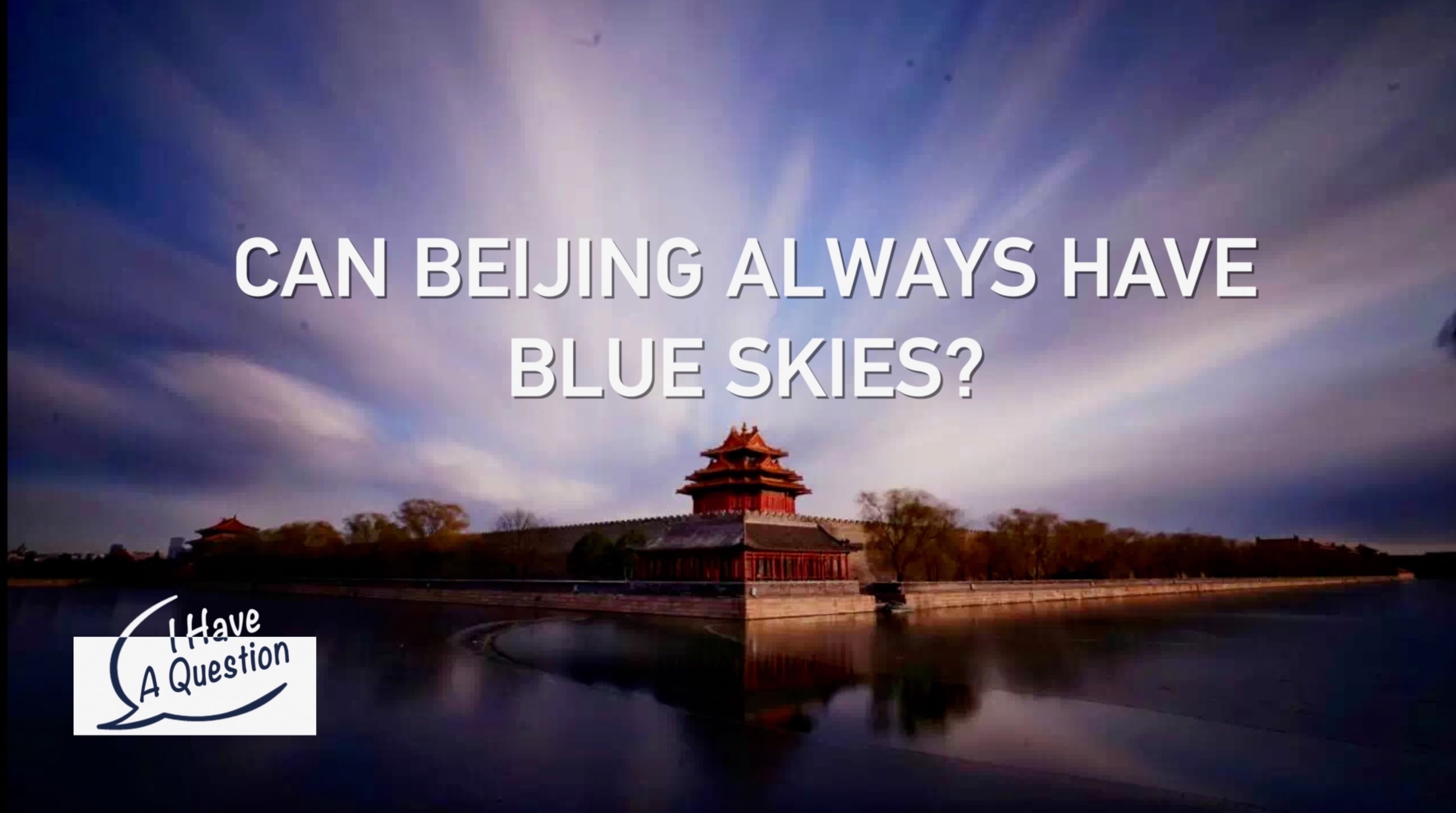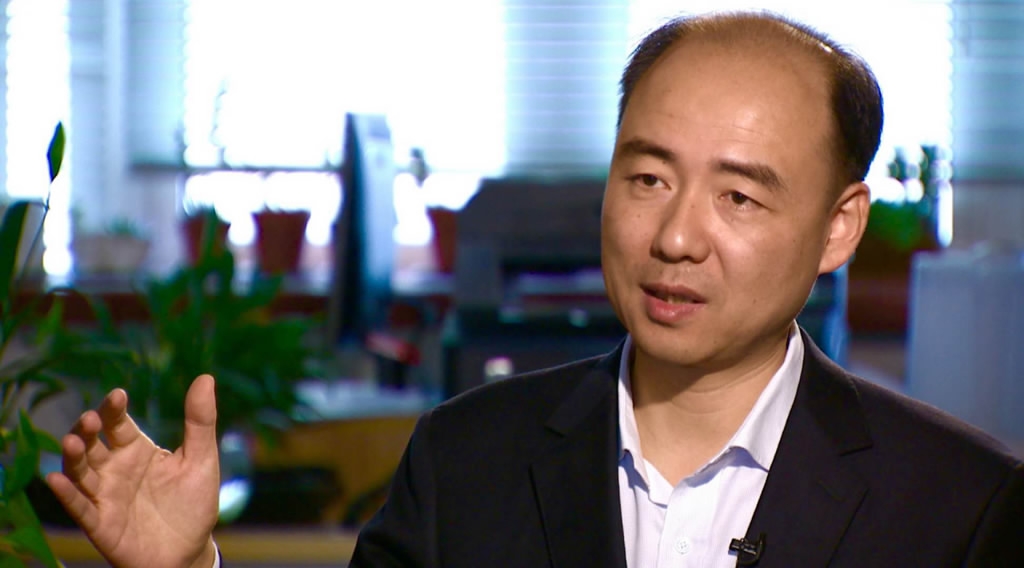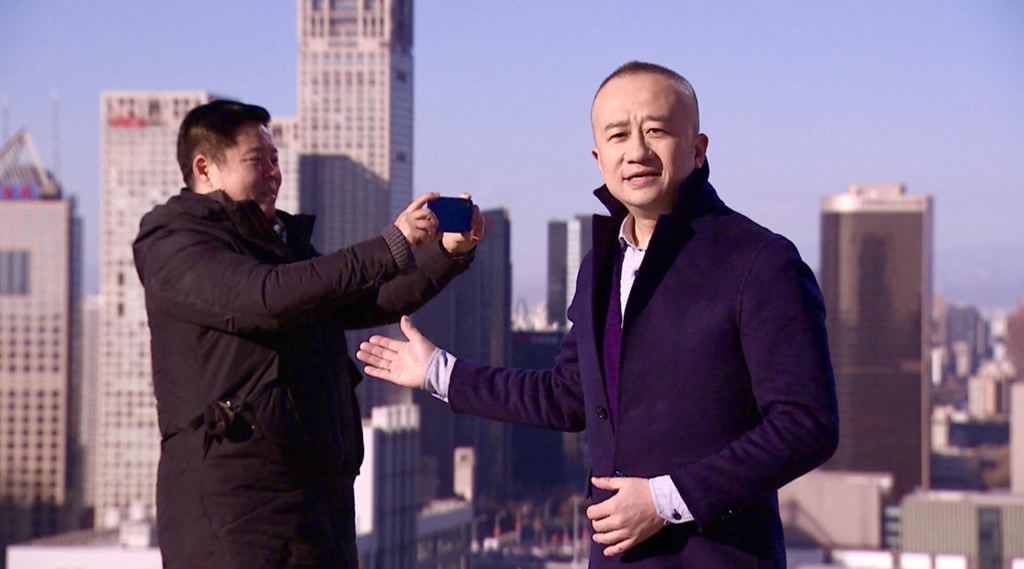
Tech & Sci
22:18, 13-Mar-2018
I HAVE A QUESTION: How’s the weather today?
By Han Bin, Wei Lynn Tang, Zhuang Yuying

HOW CAN BEIJING ALWAYS HAVE BLUE SKIES?
Blue skies... Something so fundamental – a natural resource which should free – which we may not truly appreciate it until it’s gone. And those who live in Beijing and its surrounding areas know this best. However, things appear to be looking up.
“The past year was no longer [about ranting how bad the smog is], but asking: Why are there so many blue sky days in Beijing?” says Zou Yi, founder of the BeijingAirNow NGO.
Zou recalls it all too clearly, having documented Beijing’s skies – in particular, those above a Beijing TV station just 330 meters away from his home – every single day from January 2013. He has taken 2,000 photographs in 5 years.
Beijing had a good run in 2017 when it came to air quality. The average daily concentration of PM2.5 fell to 58 micrograms per cubic meter last year, a 20.5-percent fall from 2016, and a larger drop from the 90-microgram average level in 2013.

Zou Yi has seen how Beijing’s skies have transformed from being severely polluted – to the degree of going off the charts – to its almost-perfect blue hue in February 2018… all via his phone-snaps. /CGTN Photo by Wang Jigang
Zou Yi has seen how Beijing’s skies have transformed from being severely polluted – to the degree of going off the charts – to its almost-perfect blue hue in February 2018… all via his phone-snaps. /CGTN Photo by Wang Jigang
Ma Jun, director of the Institute of Public and Environmental Affairs, attributes the better blue skies days to both human efforts and favorable weather conditions – boosted by cold fronts which helped to disperse the pollutants – but mostly the former reason.
“This cannot happen without critical efforts from the Ministry of Environmental Protection last year. Having sent over five-thousand inspectors to the Beijing, Tianjin, Hebei region, they have held those local officials who have failed their responsibilities accountable,” he says.
MA: “GOVERNMENT HAS POLITICAL WILL”
The turning point, according to Ma, came in 2013 when the government decided to monitor and disclose the PM2.5 concentration level to the public.
Its five-year action plan also saw Beijing’s coal consumption reduced from 23 million tons per annum to less than seven million last year, he adds, with the local government having helped a million households switch their winter heating sources from coal to natural gas.
“Many of us Beijing residents were suspicious and doubtful if Beijing can really achieve the 60 micrograms (target by State Council) by 2017. And now with these targets achieved, I think confidence has been boosted,” Ma says.

Ma Jun says it’s really human efforts that have been contributed to blue skies days in Beijing. /CGTN Photo by Wang Jigang
Ma Jun says it’s really human efforts that have been contributed to blue skies days in Beijing. /CGTN Photo by Wang Jigang
"But further efforts must be made", Ma asserts. "Beijing’s blue skies – which have seen such significant improvements – only accounted for 62 percent of [the days in] 2017, with this proportion expected to rise to 80 percent by 2020."
“We need to recognize the challenges, but we should also be optimistic because the government obviously has political will,” Ma quips.
“Without [the will] it will not really disclose and monitor all 400 cities every hour; it will not require thousands of major coal power, iron, steel and cement companies to report to the public hour by hour their emission data,” he says.
But beyond that, Ma says Beijing has also played a “big brother” role, as it coordinates with the Ministry on a regional pollution effort – extending assistance to surrounding regions to cut back coal consumption.
BUT THIS “WILL” MUST CONTINUE
Another reason why Beijing had more blue skies days last year: Its cold front has helped to disperse local smog, while kept away smoggy dust from its surrounding regions of Hebei, Shandong and Henan provinces.
“These were very helpful but weather is not something we can control. We may not continue to enjoy such favorable weather conditions [in the future],” Ma cautions.
In fact, he says some of the air pollution control measures are still very short-term based and too administrative-dependent, with no full establishment of a longer-term mechanism in place. Ma has some ideas about that:
- Continue with what has worked
“Beijing needs to continue its successful actions – reduce coal consumption, work on controlling industrial pollution by restructuring the industry. In the meantime, it can also try to improve the means of transportation – that will be further highlighted in the next three years.”
- Coordinate regional pollution control
“More importantly, to help surrounding regions strike a balance between economic growth and environmental protection… I think that’s the biggest challenge because they [each province] are in a different phase of development, and many of them still want to achieve their GDP growth targets. They do not believe they can develop in a cleaner way, with many of them still eyeing to protect the high energy-intensive industries.”
- Further restructure heavy industries
“Some of the major steel plants are [still] highly inefficient and they should be restructured. But because these provinces want to meet their GDP growth targets, they allocated the highly valuable and limited natural gas to these factories – in order to keep these industries alive. This is just one of the short-term solutions the local government has taken.”
“We need to find a way to build a longer-term mechanism based on the rural role, to have all stakeholders come together to tap into the market approach. For example: green supply chain, green finance, help the market reward those who want to do better rather than suspending and shutting down production universally.”
- Micro-reporting as another “crackdown” means
“Our Blue Map app has seen users file tens of thousands of so-called ‘micro-reporting’ against violators on the digital map. They can share those violations and tag those [violators’] Weibo accounts. In response to that, more than 800 major factories have openly addressed their violations.”

Zou Yi’s BeijingAirNow NGO works with scientists and scholars on a technology to assess air quality via his photos. /CGTN Photo by Wang Jigang
Zou Yi’s BeijingAirNow NGO works with scientists and scholars on a technology to assess air quality via his photos. /CGTN Photo by Wang Jigang
As for Zou Yi, he is confident that Beijing is heading towards the right direction in controlling the source of pollution, namely the transfer of coal-usage to natural gas.
“We should also take some time to be aware and contribute, in our own small way in our daily decisions… be it in going green, conserving energy, or reducing emissions.”
Zou says in hindsight, it was the right thing to do five years ago – snapping away one picture at a time, for, how does one reconstruct the scenes (polluted skies) if not for these photos?
“I hope my kids will have more blue skies and a cleaner environment in the future, because we would have done more in the next five years,” Zou says.
He also calls for the government to increase its efforts, to enable more transparency in getting out environmental protection information to the public.

SITEMAP
Copyright © 2018 CGTN. Beijing ICP prepared NO.16065310-3
Copyright © 2018 CGTN. Beijing ICP prepared NO.16065310-3